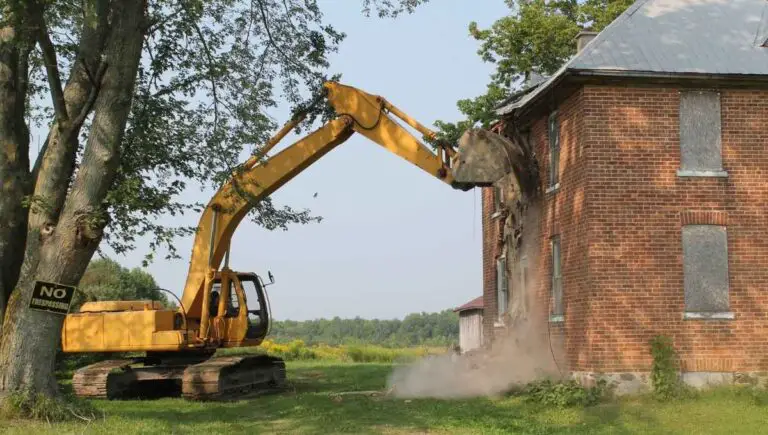Is It Legal to Put Mothballs in Your Yard? The Shocking Truth!

Are you having pest problems in your yard and garden? You may have heard that using mothballs helps to repel pests. Right now you may even be considering putting them out on your lawn. But is it acceptable and is it legal to put mothballs in your yard?
Using mothballs in your yard is considered illegal and should not be done. The usage of mothballs is regulated by the Environmental Protection Agency (EPA). That means using mothballs for anything other than their intended purposes is illegal due to the harm it causes to humans, wildlife, and the environment.
If you are thinking about using mothballs to address pest problems in your yard, then it’s time to reconsider. In this article, we will explain the dangers of mothballs and why you shouldn’t use it as a pest repellent in your yard.
This post contains affiliate links from Amazon and other stores. This means Yard Blogger may earn a commission if you make a purchase using any of our links. Please refer to our full affiliate disclosure policy for full details.
Here’s a Quick Pro Tip!
The safe and proper disposal of mothballs is a very serious thing that shouldn’t be taken lightly. Due to their high levels of toxicity, you’ll want to make sure you collect and store the mothballs in airtight disposable containers with lids so the fumes don’t leech out.
Make sure to use disposable protective gloves when handling them, and then place them in airtight disposable containers with lids, both of which you can easily purchase on Amazon.
Why Do People Put Mothballs In The Yard?
Mothballs are popularly used in the U.S. to repel insects and pests that like to eat natural fibers, particularly wool. However, people started using mothballs to repel most insects and pests in their garden. At that time, mothballs may have been made using different chemicals that have an effect on pests. Older products bore labels stating that mothballs can indeed be used as repellents.
So why would you put mothballs in your yard? Many people got the idea that mothballs can also be used in the garden because of commercial claims stated on the product. This may no longer hold true because the way mothballs are made is different from before.
Today, mothballs are made from 100% naphthalene or paradichlorobenzene, which when placed in an airtight container, releases gases that can kill moths and their eggs. This is why they are safe to use indoors, provided they are in an airtight container.
Mothballs are typically used to protect items that are put away for a long time, such as those in your storage area or garage. When used for other purposes, it can be risky for the health of humans, animals and the environment.
What Kind Of Animals Do Mothballs Keep Away?
Mothballs are intended for fabric pests that eat away fibers of your clothing or carpets. Examples of these are the carpet beetle and clothes moth. Other pests included in this category are crickets, silverfish, cockroaches and termites.
There have been claims that mothballs can keep away garden pests, like snakes, as well as mice and squirrels. However, there hasn’t been any research done on the effect of mothballs as repellents against these animals.
Using mothballs outdoors is a big no-no as it can harm innocent wildlife that may be stopping by your property, or even your own pets.
Is It Safe To Put Mothballs In The Yard?
To put it simply, no – it is not safe to put mothballs in your yard. In fact, it brings health risks and it’s generally a bad idea. People have done this thinking that they can effectively repel pests. This could be because many popular websites have provided instructions on how to use mothballs as a pest repellent.
Mothballs have been used – as previously mentioned – to deter snakes in the garden, get rid of mice in the garage, or even squirrels in the attic. They are also claimed to be effective against bats when originally, it was used only for moths. Despite these claims, mothballs SHOULD NOT be used in your home, in gardens, or any open spaces.
Mothballs are a lot more dangerous than people think. Long-term exposure to the fumes can accumulate in your system and bring health problems later on.
Are Mothballs Toxic To Humans?
Mothballs are highly toxic to humans, especially when ingested. This situation could happen to children, who would easily think that the pesticide is a candy. After all, mothballs do look like balls of candy, which can be tempting to an innocent kid.
If mothballs are ingested, they can cause the following symptoms:
- Vomiting
- Seizures
- Abdominal pain
- Coma
The serious damage caused by naphthalene ingestion is when red blood cells are destroyed. As a result, they can no longer transport oxygen to the rest of your body.
Exposure to naphthalene balls can also happen through skin contact, such as touching mothballs with your bare hands, and then eating/smoking without washing your hands first.
Are Mothballs Toxic To Breathe?
According to this published review titled, Naphthalene Mothballs: Emerging and Recurring Issues and their Relevance to Environmental Health, majority of exposure to naphthalene happens through inhalation. So yes, mothballs are toxic when breathed in.
An estimated 396 g of naphthalene balls can raise the indoor concentration of the toxic fumes to 200 micrograms/cubic meter over one year. Accidental inhalation can also happen when naphthalene balls are used the wrong way, such as putting it in vents to repel pests.
Prolonged exposure to naphthalene through inhalation can result in the following symptoms:
- Dizziness
- Headaches
- Nausea
- Breathing difficulties
- Disorientation
There are cases, although rare, wherein children experience symptoms related to naphthalene exposure after wearing clothing that has been stored with mothballs. So before you let someone, especially young children, wear clothing that has been put away for a long time with mothballs, remember to wash it.
How Long Do Mothballs Last Outside?
When used inside an airtight container, mothballs can last for up to two months; some can last for a year. You’ll know when it’s time to put new ones when you see that they’ve reduced in size.
The rate at which mothballs dissolve will still depend on the environmental conditions and the temperature of the area where it is placed. They tend to “melt” faster when placed in humid or hot temperatures and can last longer if placed in the cold.
But do mothballs melt in rain? No, technically they don’t because of their chemistry. Mothballs reducing in size means it turned into vapor.
Some people who have used this pesticide outdoors can attest that mothball smell outside can last even when the balls have dissipated. This only means added exposure even if you take it outside, which, again, is something you shouldn’t do.
Are Mothballs Illegal To Use Outside?
Since mothballs are intended to be used against fabric pests to safely store items made from natural fibers, it can be considered illegal to use them otherwise. Due to several safety concerns, mothballs shouldn’t be used in ways other than what is stated on the label.
To this day, mothballs are still being advertised as a garden pest repellent. Some commercial snake and vermin repellents also contain naphthalene. However, evidence of their effectiveness against squirrels and snakes are lacking.
Why Are Mothballs Illegal
Mothballs are only illegal if they are used outdoors. In most labels, it is explicitly stated that the balls should be placed in an airtight container for a certain period of time. Airtight spaces include garment bags and storage bins.
However, they have been used in trash cans, vehicles, vents, and even open closets. This violates the proper usage of the pesticide and in that case, it is considered illegal. In addition, mothballs that have not undergone checks by the EPA are considered illegal and should not be used.
Illegal mothballs are those that are sold in the streets without proper labeling or those that are copycats that bear fake EPA registration. Click here to check some of the products that are considered illegal by the EPA.
Why Are Mothballs Banned
In the U.S., mothballs are not banned but rather regulated. The same thing cannot be said for EU nations, however, since mothballs are banned since 2008 because of their potential health risks. Small children, in particular, are the most easily affected. Still, these products and other naphthalene-containing pesticides are widely available on the internet.
To err on the side of caution, only use products that have an EPA registration number. Shop mothballs only from stores that you know you can trust. And remember to always check the label before buying.
How To Dispose Of Mothballs?
So now you understand the risks associated with mothball usage. You may decide to dispose of the mothballs you thought could help with your garden pest problems. If so, there are certain precautions you need to observe.
Mothballs are known to contaminate the soil and other water sources. As a result, the poison can kill plants nearby. At the same time, it may find its way to the waters and affect marine life. It can even contaminate water that you drink.
That being said, mothballs are considered a toxic waste so proper disposal is a must. To avoid any naphthalene contamination that can harm the environment, keep in mind the following tips:
- Do not flush down the drain
- Do not throw in with regular trash
- Take naphthalene balls at a hazardous-waste collection site
Conclusion: Is It Legal To Put Mothballs In Your Yard?
Without a doubt, mothballs can be effective agents against fabric pests that may destroy clothing you have stored away. However, several claims and ads show how mothballs can also be used as a garden pesticide.
You have to keep in mind, though, that mothballs are not intended for use as a garden pesticide. So, that means it is illegal to do so. They are a regulated product and legit ones should always bear an EPA registration number.
A more important thing to remember is that mothball use for garden pests are nothing more than just an old wives’ tale. There is no scientific evidence to back up claims that mothballs can deter pests like squirrels and snakes.






